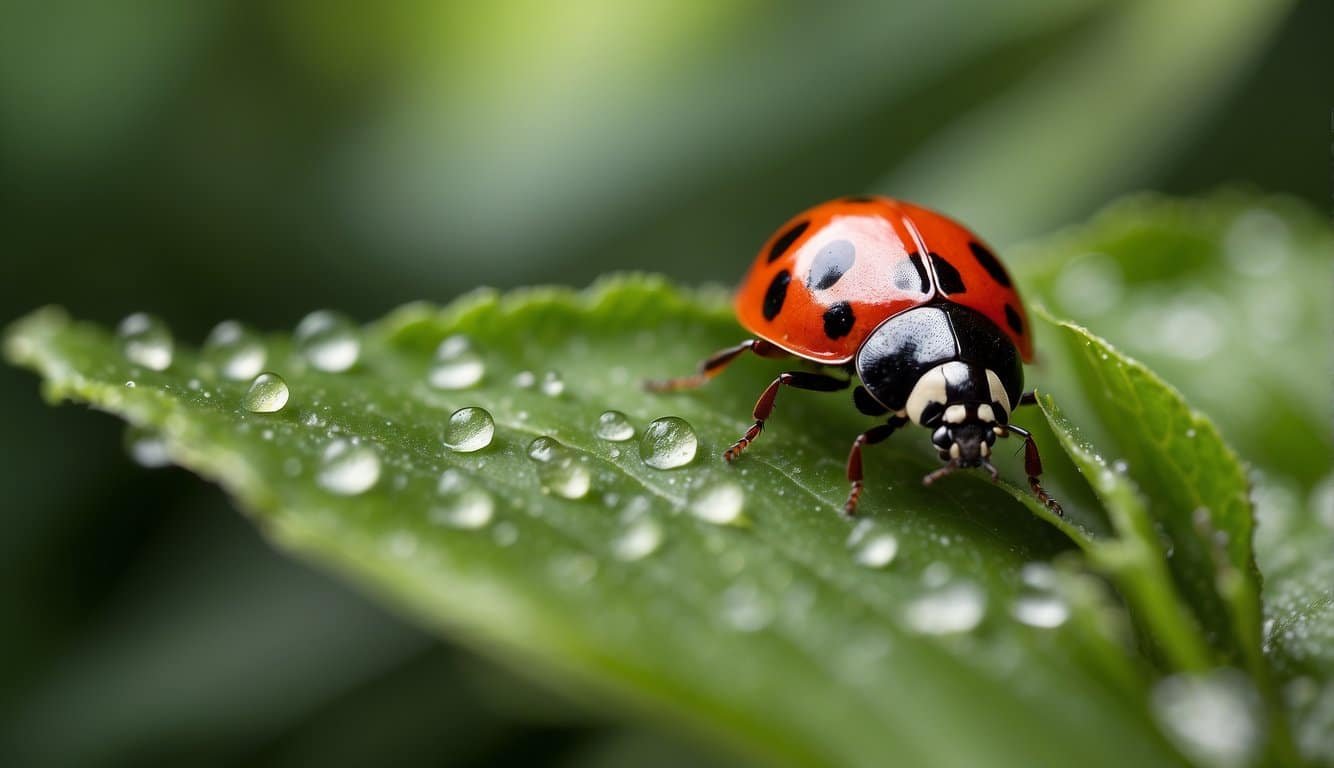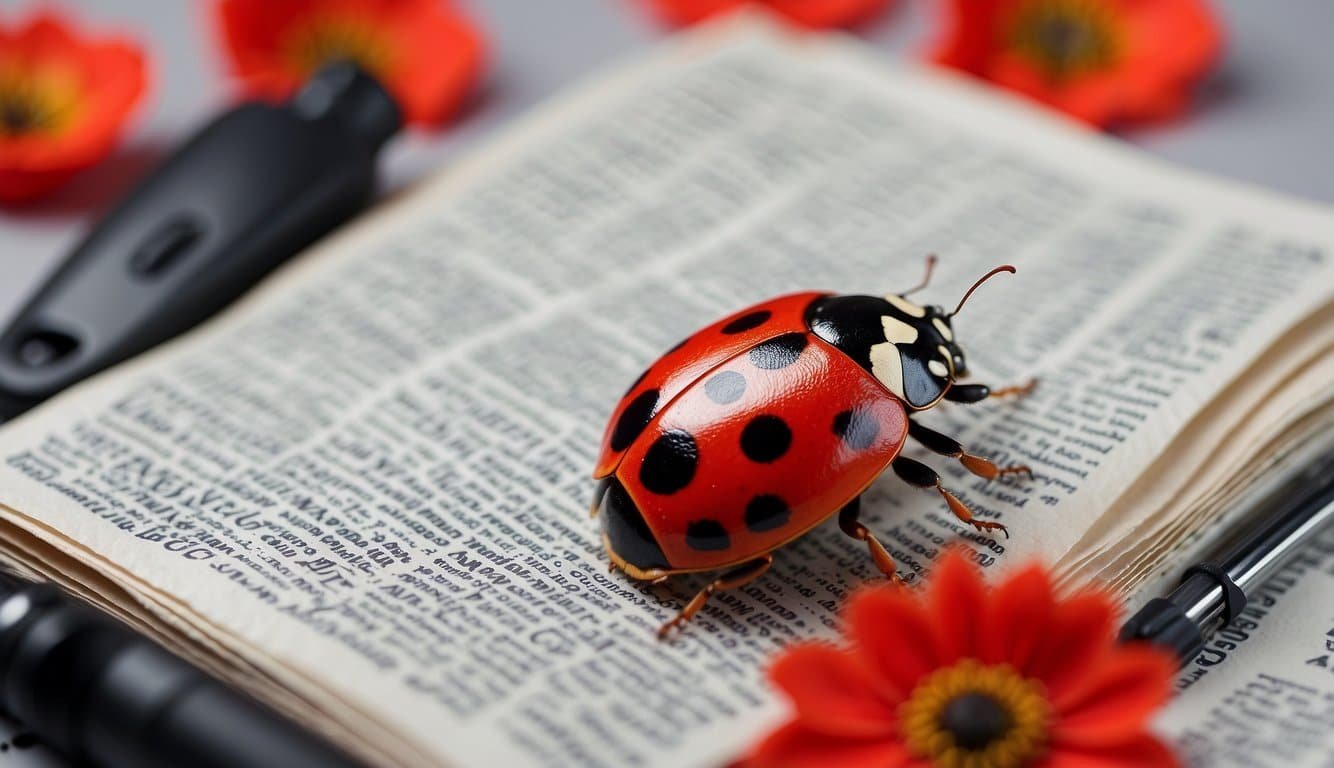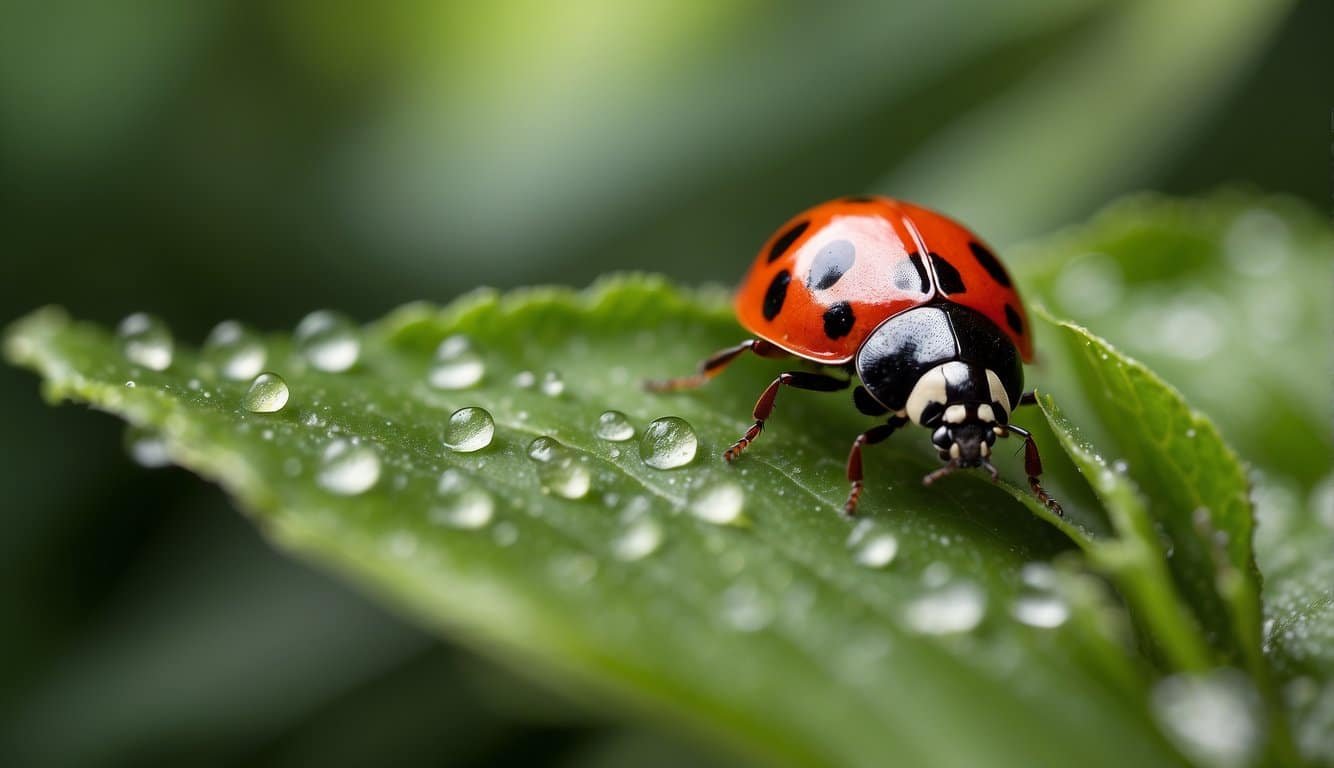Ladybug Basics
Ladybugs, also known as ladybirds, are a type of beetle belonging to the family Coccinellidae. They are easily recognizable insects due to their distinctive round shape and vivid colors, often appearing in shades of red with contrasting black spots. These tiny creatures have captured human interest for generations, often seen as symbols of good luck.
Ladybugs are not just pretty to look at; they serve a crucial role in the ecosystem. Due to their diet, primarily consisting of aphids and other plant-eating pests, they are appreciated by gardeners and farmers for their pest control abilities.
Despite the common image of a red-shelled insect, ladybugs exhibit a variety of colors and patterns. The color of a ladybug’s elytra, or wing covers, can range from yellow to orange, pink, and even all black. The number of spots can vary as well, and it’s not uncommon to stumble upon a spotless ladybug.
There are about 5,000 different species of ladybugs across the world. Each species can have its own unique set of colors and spot configurations. Interestingly, ladybugs use their bright colors as a warning to predators, signaling that they might not be a tasty or safe meal—a defense mechanism known as aposematism.
The structure of ladybugs is also fascinating. They have short legs and are known for their dome-shaped, round bodies that provide an aerodynamic shape for flying. Beneath their colorful, spotted wing covers lie their delicate flying wings, which are much larger than the elytra and help them to travel in search of food or a mate.
To learn about the diverse coloration among ladybug species, one might enjoy diving into the article Many species of ladybug share the same basic color combinations. Those curious about ladybugs’ usefulness in design applications might find the description of a parametric environmental plugin for Grasshopper rather intriguing. For those interested in the structural intricacies, the biomimetic model of the ladybug forewing offers a fascinating glance. And if invasive species are the topic du jour, consider perusing insights on ladybugs and other predatory beetles and their effects on local ecologies. Lastly, aficionados of technology and nature alike might be enthralled by advancements in classification algorithms for butterflies and ladybugs.
Ecology and Behavior

Ladybugs display a complex array of behaviors that play vital roles in various ecosystems. Known for their appetite for aphids and other pests, ladybugs are crucial in controlling these populations.
Diet and Predation
Ladybugs are primarily carnivorous, feasting on aphids and mites which makes them beneficial allies in gardens. Their voracious appetite helps farmers by naturally reducing the number of agricultural pests.
Reproduction and Life Cycle
The life cycle of ladybugs comprises four stages: egg, larva, pupa, and adult. Mating occurs in spring, and females lay hundreds of eggs amidst aphid colonies.
Habitat and Distribution
Ladybugs inhabit various environments such as forests, grasslands, and rivers worldwide, with a prominent presence in Europe and North America. They have adapted to live in spaces where their prey is abundant.
Coccinellidae in Agriculture
Farmers appreciate ladybugs for their role in pest control. Species like the vedalia beetle and hippodamia convergens are introduced to crop fields to diminish pest populations.
Conservation and Threats
While ladybugs are generally abundant, they face threats from habitat loss and climate change. Conservation efforts are important to maintain their role as predators of plant-eating pests.
Ladybugs in Human Culture
Ladybugs have been a symbol of good luck and are associated with the Virgin Mary in folklore. The insect’s popularity extends to modern culture, as seen in the French TV series Miraculous Ladybug.
Adaptation and Defense Mechanisms
Ladybugs possess several defense mechanisms including reflex bleeding from their leg joints and tough wing covers that shield them from predators.
Seasonal Behaviors
The onset of cold weather triggers ladybugs to seek shelter and enter hibernation. This survival strategy enables them to conserve energy and survive the winter months.
Cultural and Media Impact

Ladybugs not only captivate with their scarlet shells and reputation for good luck, but they also have a substantial presence in society’s cultural narratives and media outlets, ranging from folklore and myth to current digital entertainment phenomena.
Symbolism and Mythology
The ladybug carries diverse symbolism across different cultures; it’s often associated with good fortune and the protection of crops. In Christian societies, the ladybug is sometimes linked to the Virgin Mary, with its spots symbolizing her seven sorrows. Folklore suggests that the bright color of a ladybug signals that good luck is on the way, and they are beloved by gardeners for their role in managing pests such as aphids.
Ladybug in Entertainment
The ladybug has made a significant leap into the entertainment industry, most notably with the animated TV series “Miraculous: Tales of Ladybug & Cat Noir.” The series, created by Thomas Astruc and produced by Method Animation and Zagtoon, stars Marinette Dupain-Cheng and Adrien Agreste, two Parisian teenagers with the ability to transform into the superheroes Ladybug and Cat Noir, respectively. With season 5 on YouTube generating buzz, fans eagerly experience the ongoing emotional evolution of battling characters such as Hawk Moth, later known as Shadow Moth and Monarch, and the manipulative Lila Rossi. The show has garnered a large following due to its compelling storytelling that integrates themes like emotion and destruction within the superhero genre.

